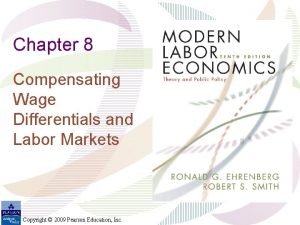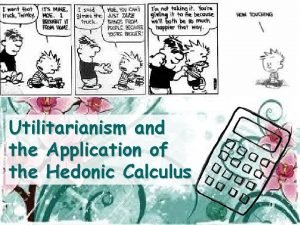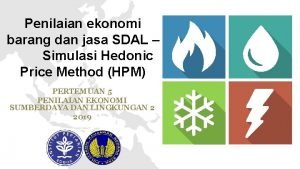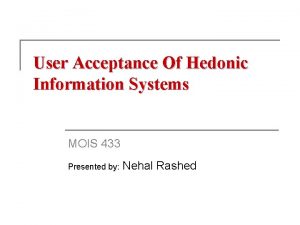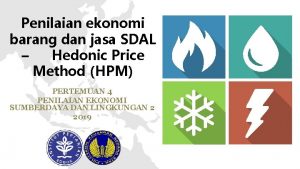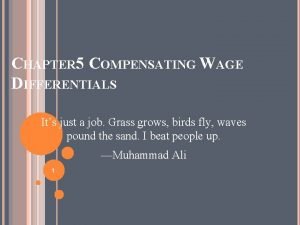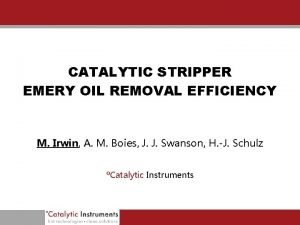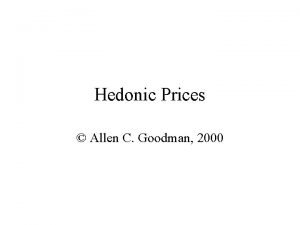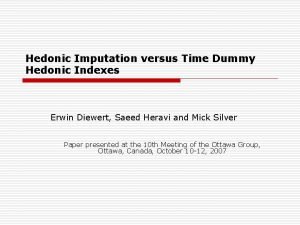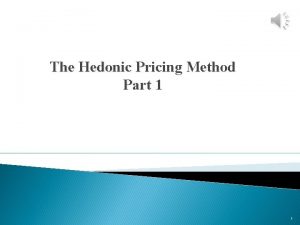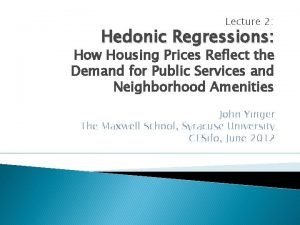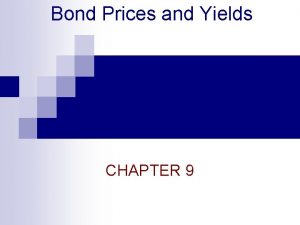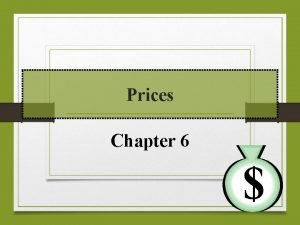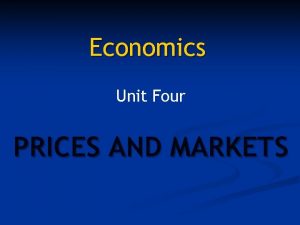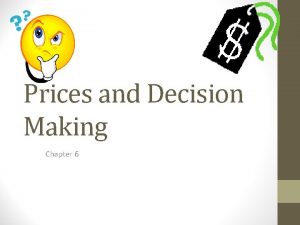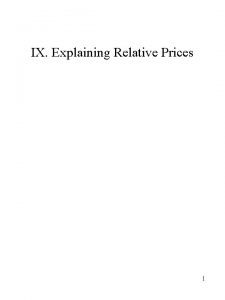Things to do with Hedonic Prices Allen C














- Slides: 14

Things to do with Hedonic Prices © Allen C. Goodman, 2000

Things to do … 1. Estimate them 2. Interpret them 3. Make price indices

Value v. # of Rooms

Demonstration • File – demo_h. xls

Interpret them (1) P = 0 + 1 Z 1 + 2 Z 2 +. . . + t + , 1. Estimate price changes Coefficient on t term would provide “quality adjusted price. ” Problems: a. Estimating it this way assumes that terms are constant both absolutely and relatively. b. terms may actually vary across areas.

Interpret them (2) P = 0 + 1 Z 1 + 2 Z 2 +. . . + t + , 1. Use them for property assessment. Suppose we have a data base on all of the houses in an area. H 1 = (6 rooms, 2000 sq. ft. , 10000 sq. ft. lot, etc. ) H 2 = (5 rooms, 1000 sq. ft. , 8000 sq. ft. lot, etc. ) H 3 = (7 rooms, 3000 sq. ft. , 15000 sq. ft. lot, etc. ) We estimate regression on house sales in the area and we get:

Problems • Do current sales reflect all of the housing? • Do we know enough about all of the houses to make them comparable?

Interpret them (3) – air pollution • This is a logical succession to the discussions of hedonic price models. The arguments went something like this: • If air pollution was bad, then people should be willing to pay less for property that was polluted. • If this was the case, then this should give some measure of the benefits that occur from the alleviation of air pollution. • It should also give you the increase in property values that might occur, if we have an alleviation of pollution.

Air pollution So we get: Valuation Problems with this: 1. To measure benefits, you want to measure the P/ Zi area under a demand curve. We can see from the accompanying diagram, that any particular hedonic price gives you only one point on the demand curve. 0 zi % of Clean Air 100

Air pollution So we get: Estimated Valuation Problems with this: 1. To measure benefits, you want to measure the area under a demand curve. We can see from the accompanying diagram, that any particular hedonic price gives you only one point on the demand curve. P/ Zi True 0 zi % of Clean Air 100

Air pollution Problems with this: 2. As we mentioned earlier, we have a real problem Valuation with the "open city closed city" question. If pollution abatement P/ Zi changes the supply of different types of land, the total land values might not change much. I haven't shown you what that all means, but I will soon. Estimated 0 zi % of Clean Air 100

Other problems … 3. We really don't know what effects pollution should really have on property values. Does twice as much pollution just look bad, is it twice as bad, or does it kill you? Ridker and Henning used census tract level data, for 1960, in St. Louis. They looked at median property value in the tract. Used a variety of explanatory variables -- for air pollution, they used sulfates. They found that a 1 unit fall in sulfates was correlated with a $245 rise in property value. This implies, they said, an increase in property values by approximately $83, 000 (in $1960 - multiply by 5 for current dollars --- > about $415, 000). Then use the identity: V = R/i to determine annual gain. If i = 10%, then: 83, 000 = R/0. 1 R = 8, 300, 000.

Create Price Indices P = 0 + 1 Z 1 + 2 Z 2 +. . . + , Example: Suppose we have reason to believe that there are two submarkets. We estimate: P 1 = 10 + 1 1 Z 1 + 1 2 Z 2 +. . . + P 2 = 20 + 2 1 Z 1 + 2 2 Z 2 +. . . + Take a bundle with (Z 1*, Z 2*, …) and “move” it from submarket to submarket. It is presumably always the same house. P 1* = 10 + 1 1 Z 1* + 1 2 Z 2* +. . . + P 2* = 10 + 1 1 Z 1* + 1 2 Z 2* +. . . + Price index = P 1* / P 2*

Create Quantity Indices P 1* = 10 + 1 1 Z 1* + 1 2 Z 2* +. . . + P 2* = 10 + 1 1 Z 1* + 1 2 Z 2* +. . . + Price index = P 1* / P 2* Q 1 = P 1/P 1* So if a house has a price of $250, 000, and the “index house” has P 1* = 200, 000. The particular house has 1. 25 (= 250/200) units of “housing. ”
 Wanderers nachtlied 2 analyse
Wanderers nachtlied 2 analyse Hedonic wage model
Hedonic wage model Hedonic calculus scenarios
Hedonic calculus scenarios Hedonic set point
Hedonic set point Hedonic demand function adalah
Hedonic demand function adalah Hedonic rating scale
Hedonic rating scale Advantages of hedonic pricing method
Advantages of hedonic pricing method User acceptance of hedonic information systems
User acceptance of hedonic information systems Miami
Miami What are compensating differentials
What are compensating differentials Kevin t mc
Kevin t mc Whats an energy pyramid
Whats an energy pyramid Seven life processes of living things
Seven life processes of living things Catalytic stripper
Catalytic stripper Tripod of pricing
Tripod of pricing

